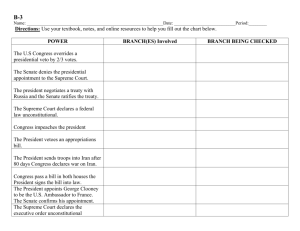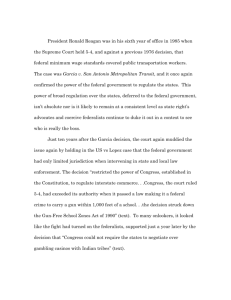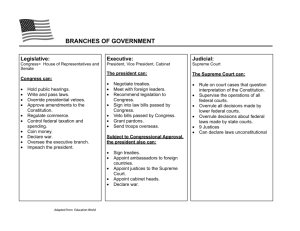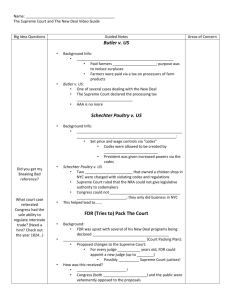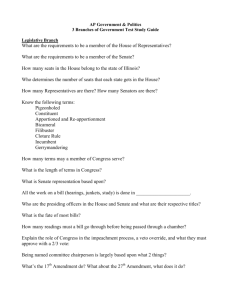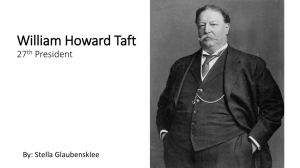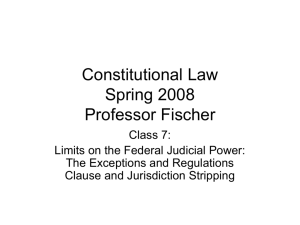File
advertisement
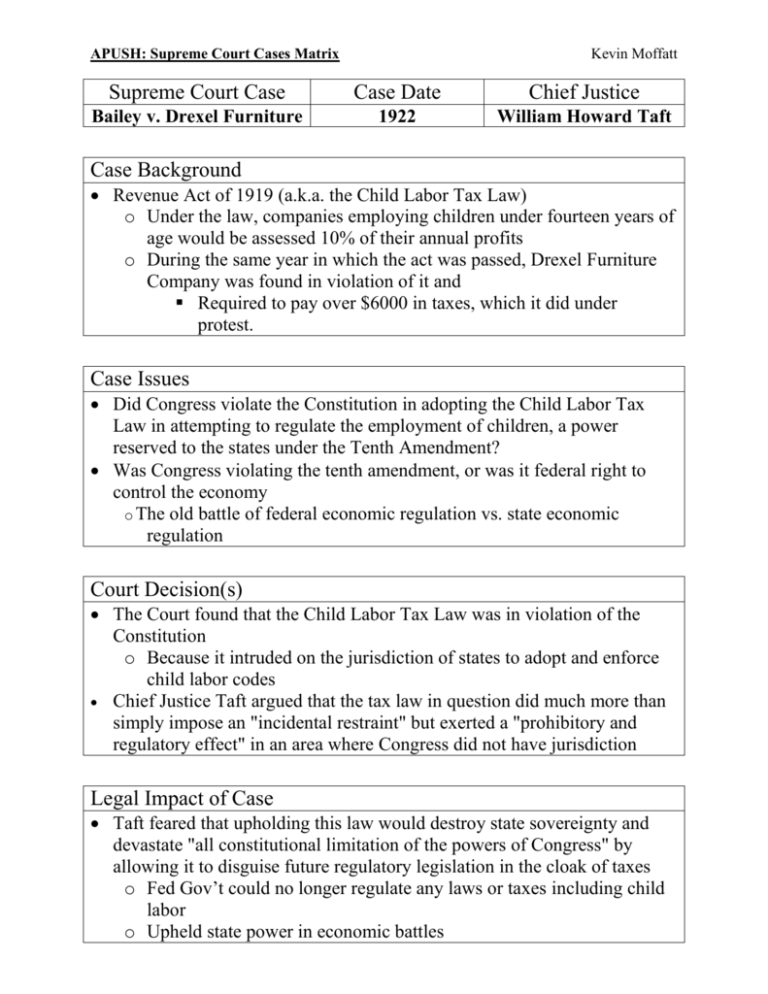
APUSH: Supreme Court Cases Matrix Kevin Moffatt Supreme Court Case Case Date Chief Justice Bailey v. Drexel Furniture 1922 William Howard Taft Case Background Revenue Act of 1919 (a.k.a. the Child Labor Tax Law) o Under the law, companies employing children under fourteen years of age would be assessed 10% of their annual profits o During the same year in which the act was passed, Drexel Furniture Company was found in violation of it and Required to pay over $6000 in taxes, which it did under protest. Case Issues Did Congress violate the Constitution in adopting the Child Labor Tax Law in attempting to regulate the employment of children, a power reserved to the states under the Tenth Amendment? Was Congress violating the tenth amendment, or was it federal right to control the economy o The old battle of federal economic regulation vs. state economic regulation Court Decision(s) The Court found that the Child Labor Tax Law was in violation of the Constitution o Because it intruded on the jurisdiction of states to adopt and enforce child labor codes Chief Justice Taft argued that the tax law in question did much more than simply impose an "incidental restraint" but exerted a "prohibitory and regulatory effect" in an area where Congress did not have jurisdiction Legal Impact of Case Taft feared that upholding this law would destroy state sovereignty and devastate "all constitutional limitation of the powers of Congress" by allowing it to disguise future regulatory legislation in the cloak of taxes o Fed Gov’t could no longer regulate any laws or taxes including child labor o Upheld state power in economic battles APUSH: Supreme Court Cases Matrix Kevin Moffatt



